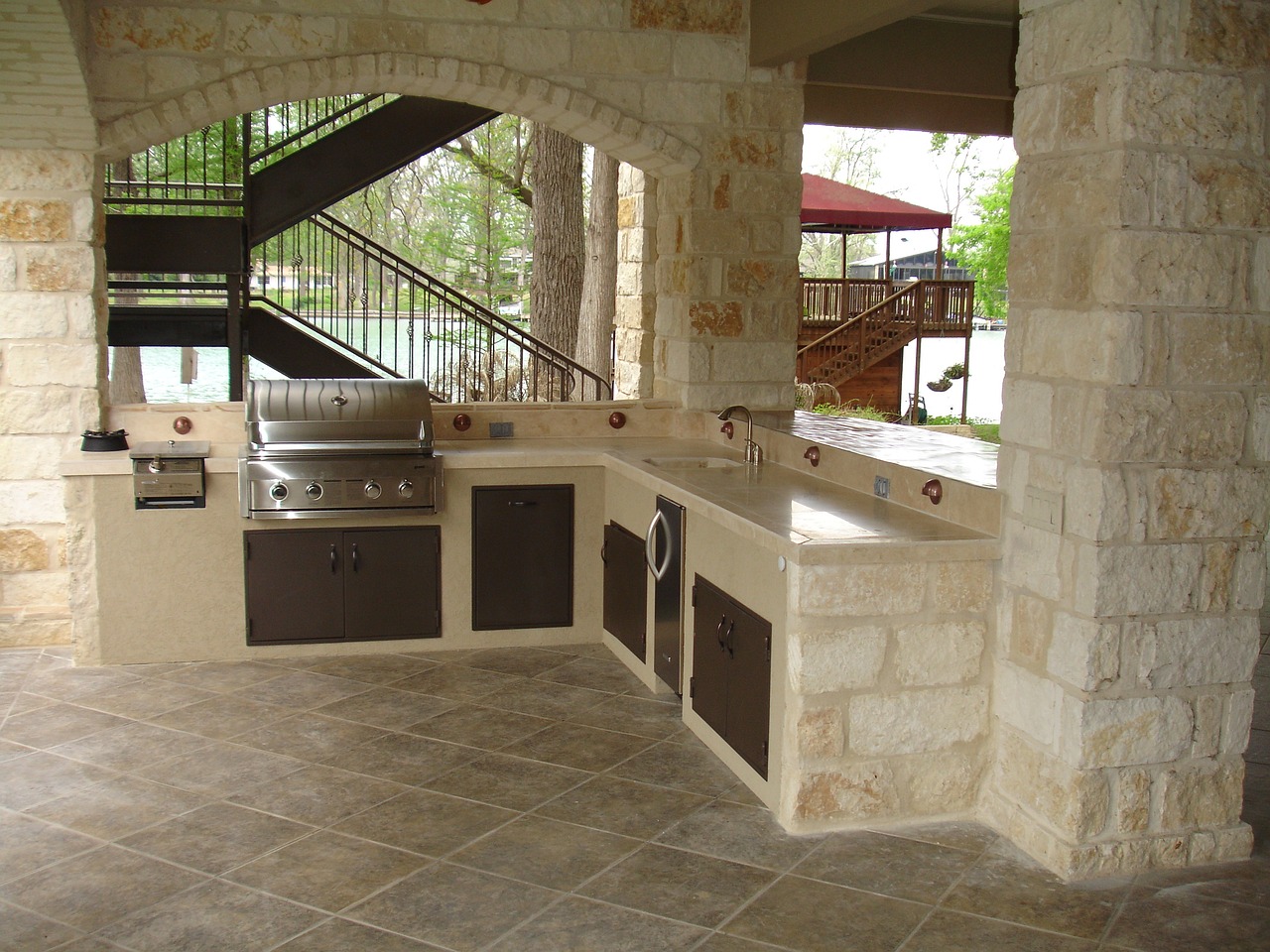Careful Selection of Grilling Equipment, Appliances and Cabinets is Critical to Designing a Successful Outdoor Kitchen
The popularity of outdoor kitchens continues to skyrocket, and with it the availability of products and techniques that make them affordable and functional also is increasing. If a client’s desire is to go beyond the standard grill, then an outdoor kitchen can provide all the conveniences to rival any indoor kitchen. Equipment selection remains the primary consideration. The second most critical consideration pertains to cabinetry.
Equipment
With its various features, the grill entices the novie and expert. Therefore, careful assessment of a client’s grilling style or desire is in order.
Natural or propane gas and the accompanying storage/gas/electrical line placement is crucial. If built-in (versus freestanding), the 3/4-inch gas line needs to have a shutoff and quick disconnect for an emergency or season change. If using propane, there needs to be room for the tank that is easily accessible for replacement. If using natural gas, room for the line with a pressure regulator is needed. All grills usually need an insulating surround (some come from the grill maker) to protect any material surrounding it, such as wood, particleboard or combustible materials.
Attached lighting and electrical lines for igniters are a must with a shutoff if possible. All of these connections need to be sealed against water. A grill design element not usually considered is the placement of wind protection (a 10 – to 12-inch backsplash, if not in the design of the hood). When not considered, the hot air forced down from the back of the grill could melt plastic knobs.
If you specify an icemaker and refrigerator, UL approved for outdoor use is necessary. A manufacturer’s warranty usually is only for temperatures down to 32 F. This requires more consideration in colder climates for a complete disconnect. Ice machines and sinks require a couple quarts of marine-grade antifreeze be placed in the drains in off months. Water lines need a bleed-port through which water can be depleted so lines don’t freeze. Ice machines should have a gravity drain; pump models are too prone to freezing.
Cabinetry
With introductions of teak, cypress and other waterproof woods, outdoor-grade laminates and man-made materials, the aesthetics of cabinertry can be enhanced beyond stainless steel. Select cabinets made with marine-grade materials, such as plywood, that have weep holes for water to drain out of in cabinets and drawers. Doors and drawers need rubber gasket seals. The flashing on any grill insulation kit installed around the perimeter of the grill should protect the cabinet on each side, as well as from any heat below.
Drawer glide systems should be of the highest stainless/nickel content to protect against moisture/dust infiltration. Hinges need to have a tighter tension to prevent wind from opening them; otherwise a lock may be needed.
Equipment and cabinetry are the most important components of an outdoor kitchen. Once they are designed, selected and installed well, they will provide optimum pleasure. Ensure your design/construction team understands some of these practical but sometimes overlooked aspects of an outdoor kitchen.
